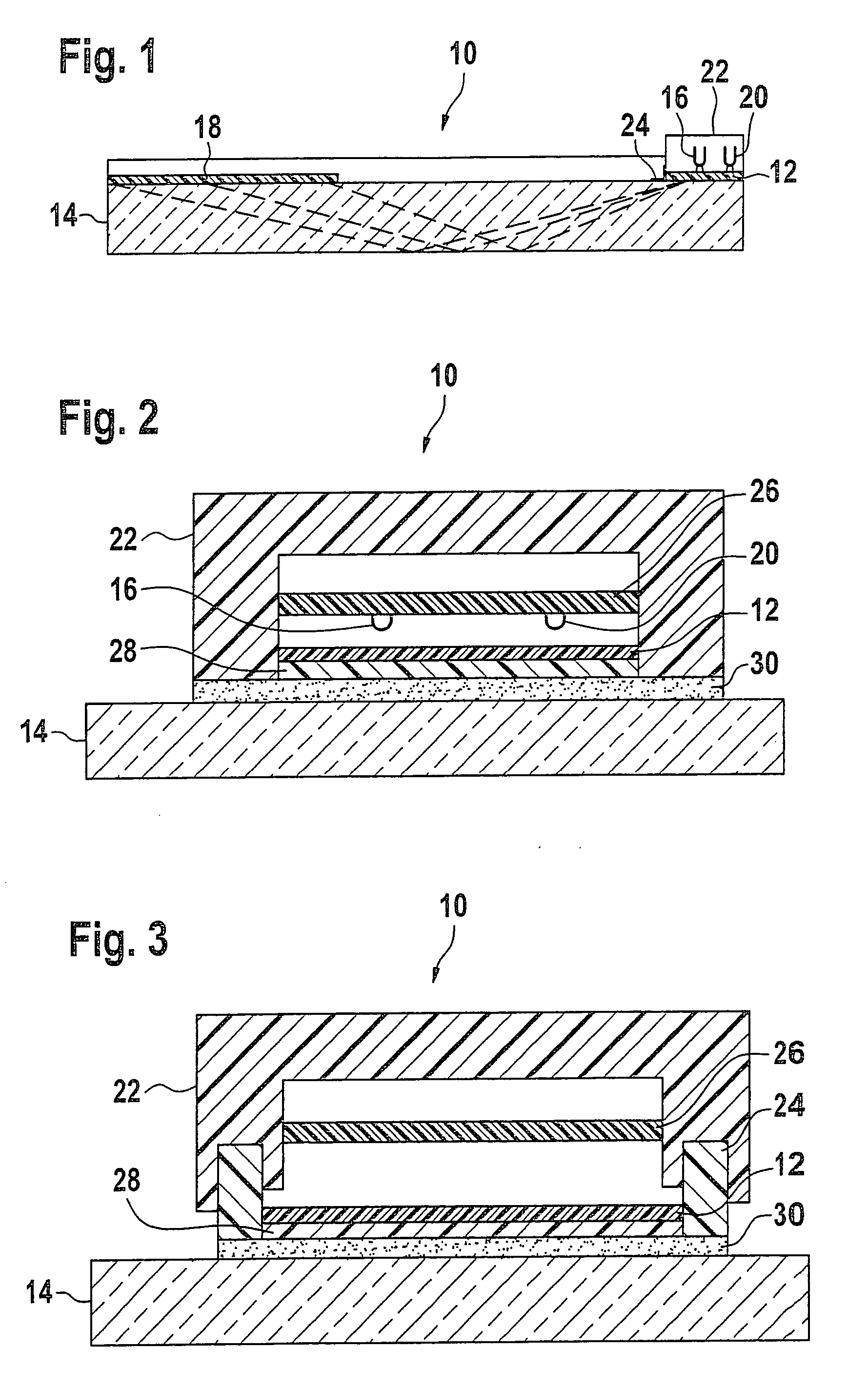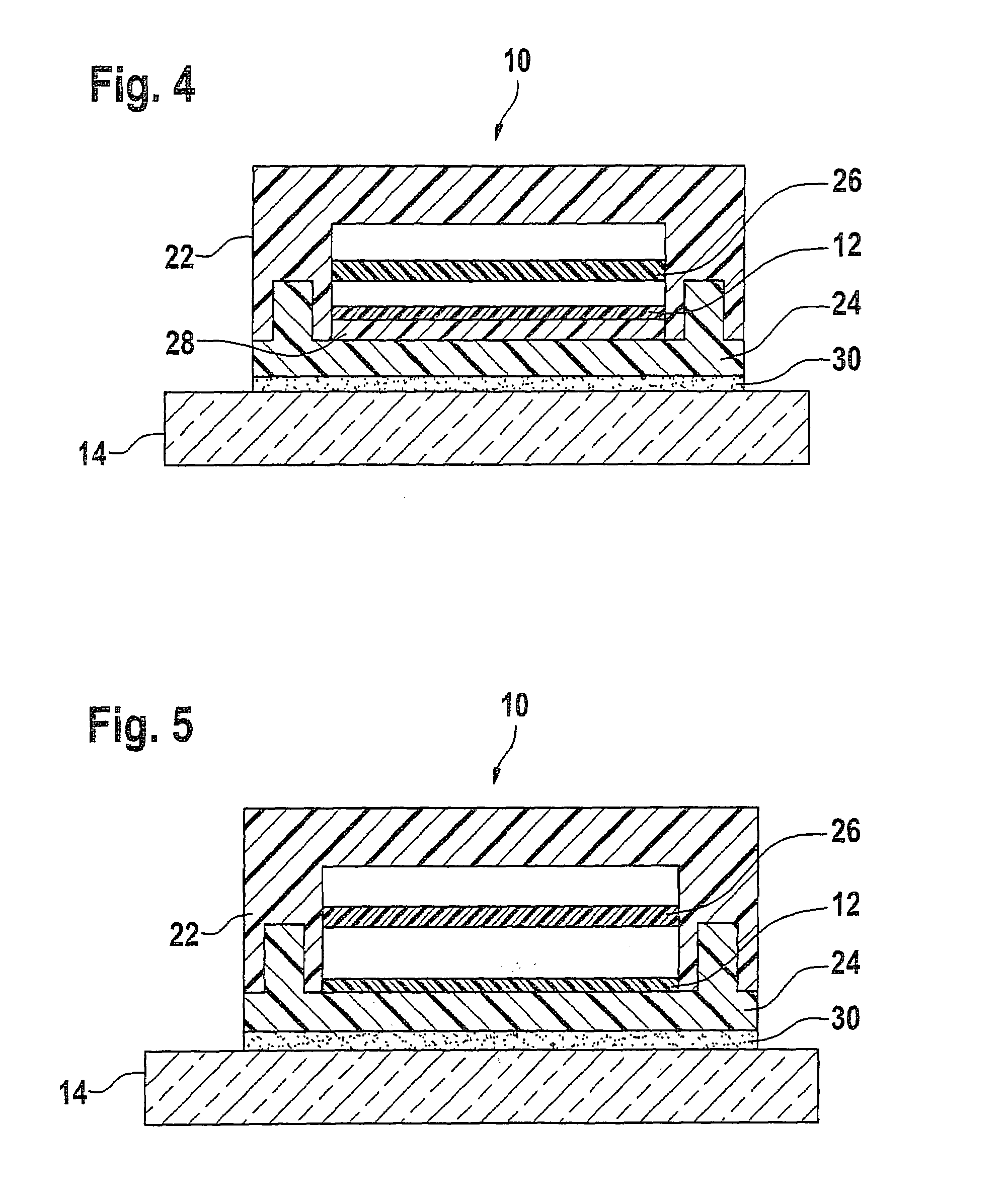Holographic sensor, especially for recognition of moisture on a glass pane of a motor vehicle
a technology for recognizing moisture and sensors, which is applied in the field of holographic sensors, can solve the problems of large sensor components, high production costs, and complex systems, and achieve the effect of reducing production costs, reducing production costs, and reducing production costs
- Summary
- Abstract
- Description
- Claims
- Application Information
AI Technical Summary
Benefits of technology
Problems solved by technology
Method used
Image
Examples
Embodiment Construction
[0016]FIG. 1 shows a holographic sensor in a schematic cross-sectional representation. Sensor 10 is essentially made up of a first diffractive element 12, which is glued to a glass pane 14. Diffractive element 12 is designed here as a holographic film. A transmitter 16, capable of emitting radiation having a frequency f, is positioned over diffractive element 12. In operation, transmitter 16 emits radiation having frequency f in the direction of diffractive element 12, which deflects this such that the radiation is completely reflected on the glass-air interface facing away from the sensor when glass pane 14 is dry.
[0017]After this complete reflection, the radiation reaches the glass-air interface of glass pane 14 facing the sensor, and is reflected there through another diffractive element 18, for example a retro reflector, and another complete reflection in the direction of diffractive element 12, which focuses the radiation toward a receiver 20.
[0018]Diffractive element 12 is des...
PUM
| Property | Measurement | Unit |
|---|---|---|
| transparent | aaaaa | aaaaa |
| frequency | aaaaa | aaaaa |
| dimensional stability | aaaaa | aaaaa |
Abstract
Description
Claims
Application Information
 Login to View More
Login to View More - R&D
- Intellectual Property
- Life Sciences
- Materials
- Tech Scout
- Unparalleled Data Quality
- Higher Quality Content
- 60% Fewer Hallucinations
Browse by: Latest US Patents, China's latest patents, Technical Efficacy Thesaurus, Application Domain, Technology Topic, Popular Technical Reports.
© 2025 PatSnap. All rights reserved.Legal|Privacy policy|Modern Slavery Act Transparency Statement|Sitemap|About US| Contact US: help@patsnap.com



